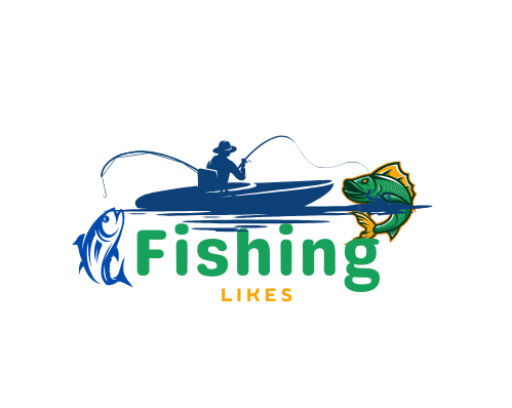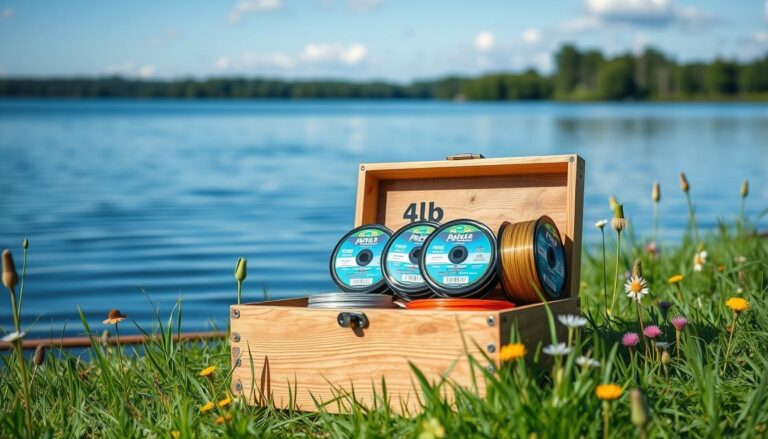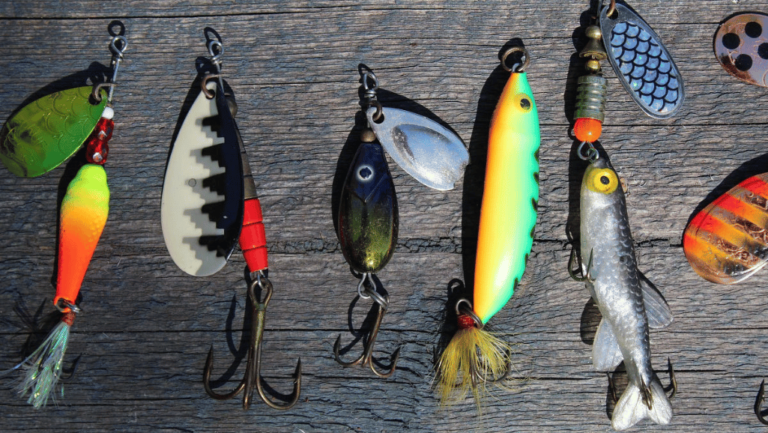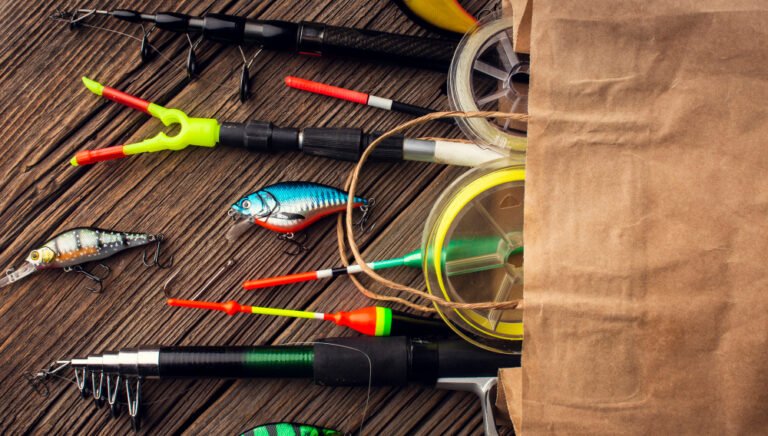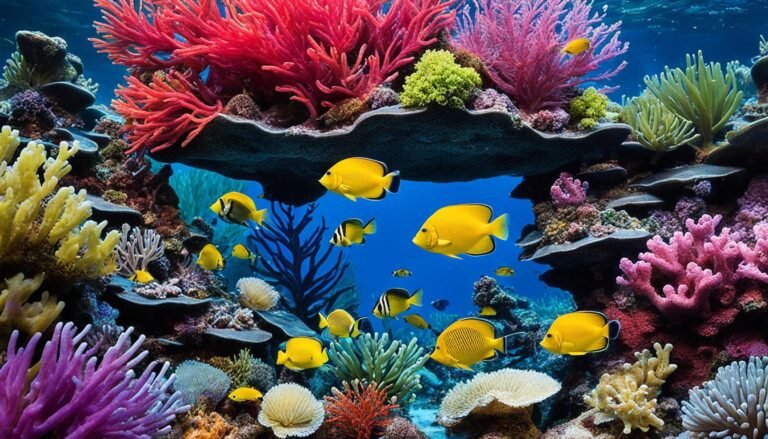Choosing the right fishing hook is key for great fishing trips. It impacts which fish you can catch and how well you can catch them. Look at the hook’s size, material, style, and where you’ll be fishing.
Getting advice from experts can help a lot. It makes your fishing tools better and your fishing adventures more fun.
Key Takeaways
- Selecting the correct angling hook is vital for successful fishing.
- Hook sizes range widely, with specific sizes recommended for different fish species and bait types.
- Fishing hook styles, such as bait hooks, Siwash hooks, circle hooks, and treble hooks, serve different fishing needs.
- The material of fishing hooks affects their durability and rust resistance.
- Fishing with barbless hooks is emphasized for salmon to help keep them hooked during the fight.
Understanding Fishing Hook Sizes
Knowing about fishing hook sizes is crucial when picking the right gear. Hooks are sized based on the gap from the shank to the point. A larger number means a smaller hook.
The Basics of Hook Sizes
Hook sizes change for different fish types. In freshwater:
- Small Fish: Pick from sizes 32 to 14 for tiny fish like small trout and panfish.
- Medium Fish: Choose sizes 12 to 1 for fish like larger trout, bass, and walleye.
- Large Fish: For big fish like pike and catfish, use aught sizes 1/0 to 6/0.
Choosing the Right Size for Different Fish
The right hook size greatly affects your fishing. Think about the fish you want to catch before you choose a hook size:
- Small Fish: Go with #20 to #14 for species like small trout and panfish.
- Medium Fish: Use sizes from #12 to #1 for larger trout, bass, and walleye.
- Large Fish: For big catches like pike and catfish, select hooks from 1/0 to 6/0.
Many anglers rely on specific fishing supplies for the fish they target. This includes various hooks designed for catching specific fish effectively.
Notable Size Systems
In fishing, there isn’t one standard hook size system. This adds to the challenge for anglers, who need to understand the sizes set by different manufacturers:
- Freshwater Fishing: Hook sizes vary from #20 to 10/0 for flies and catfish.
- Saltwater Fishing: Bigger hooks are used for large sea catches.
Studies suggest that circle hooks are better for fish since they hook in the mouth more. This helps reduce harm and makes unhooking easier:
| Species | % Mouth-Hooking |
|---|---|
| Yellowfin Bream | Up to 90% |
| Sand/Dusky Flathead | Up to 96% |
| Silver Perch | Up to 79% |
| Red Drum | Up to 96% |
| Sailfish | Up to 98% |
| Atlantic Bluefin Tuna | Up to 94% |
| Yellowfin Tuna | Up to 95% |
| White Marlin | 100% |
Circle hooks are efficient and favored in ethical fishing. They’re great for catch-and-release fishing under government rules. Choosing the right hook size improves your fishing with the right equipment, supporting sustainable and successful fishing.
Styles of Fishing Hooks
Understanding fishing hooks is key to picking the right one. Hooks like Aberdeen, bait, and circle hooks help with different fishing methods. Each hook type has a unique purpose.
Aberdeen Hooks
Aberdeen hooks are thin and light, popular for their design. They’re great for keeping bait unharmed and are ideal for small, delicate fish. Their long shank helps remove them without hurting the fish.
Bait Hooks
Bait hooks are very useful for bait fishing. They have features like barbs to keep bait secure. Their versatility spans both fresh and salty waters. This design ensures your bait—whether worm or minnow—stays on, boosting your catch rate.
Circle Hooks
Circle hooks are changing fishing with their unique design. They are great with both live bait and lures. Circle hooks hook the fish in the mouth’s corner, lessening harm. In some places, like Florida, they’re a must for protecting fish in reef areas.
Each fishing hook, like Aberdeen, bait, or circle, has its role. Choosing the right one boosts your fishing fun and success.
Materials Used in Fishing Hooks
Fishing hooks are vital for any angler, and what they’re made of matters. They are mostly crafted from steel alloys. This lets them work well in both saltwater and freshwater.
Different Types of Steel
There are two main steel types for hooks: high-carbon steel and stainless steel. High-carbon steel is preferred for its sharpness and strength. It is made strong through a tempering process, allowing for a finer wire diameter.
Stainless steel hooks cost more but they last longer in saltwater due to their rust resistance. Yet, their production has dropped because of concerns about fish survival. Some places also have rules against their use.
Rust Resistance in Hooks
Rust is a big issue, especially for those fishing in the sea. To fight it, hooks can get various coatings. A favorite is the black-nickel coat, known for lasting and looking good. But, remember, sharpening a hook can remove these protective coatings, upping its rust risk.
It’s wise to keep hooks in their original packs and away from salt spray. Taking care of fishing gear, with an eye on rust protection, means it will last longer and work well on every trip.
Single vs. Treble Hooks
The discussion between single and treble hooks considers the fish type, bait, and location rules. Each hook has unique features for various fishing needs.
Advantages and Disadvantages
Single hooks find a place with many saltwater fishermen because they are simple and reliable. They effectively secure fish, being less likely to bend or break. In addition, they’re great for letting the fish go without harm.
However, single hooks might not catch fish that are sluggish in biting. They could lead to missed opportunities for these fish.
Treble hooks, with their triple points, excel in hooking fish. They often attract more fish, but there are downsides. They can hurt the catch more and aren’t the best for catch-and-release fishing. The hooks may also tear fish skin.
Over time, treble hooks can damage the look and noise level of fishing lures. They aren’t as subtle as single hooks, making them easier for the fish to spot, sometimes causing the fish to avoid them.
Specific Uses
Single hooks work well in strong currents and when you want the tackle to move naturally. In comparison, treble hooks are common among freshwater anglers. They like the higher chance of getting a good hold on the fish with multiple points.
Certain brands now offer alternatives to treble hooks. For example, fishing gear by Halco, Shimano, and Savage Gear often comes with single hooks. Saltwater lures by Rapala and Williamson also sport these safer, in-line models now.
| Feature | Single Hooks | Treble Hooks |
|---|---|---|
| Hook Points | 67% Fewer | Three Points |
| Fish Damage | Less likely | More likely |
| Strength | Thicker, less prone to bending | Prone to straightening |
| Buoyancy | Better buoyancy, improved lure action | Poor buoyancy |
| Release | Better for releasing fish | Not ideal for catch-and-release |
Choosing between single and treble hooks should match the angler’s goals and their gear. Single hooks are safer for fish. Treble hooks, though, are more efficient in snagging fish.
Choosing Hooks Based on Fishing Environment
The fishing spot shapes the hook type a fisher uses. You need a tough and right hook for freshwater or saltwater day outs. This choice also helps keep the water and its life safe from harm.
Freshwater Fishing Hooks
Hooks for freshwater are made for places with less corrosive power than the sea. For small catches like bream, a standard #6 hook is good. Yet, for fish like Chinook salmon, hooks sized from 5/0 to 7/0 are better. These hooks are sharp and strong, despite being less rust-resistant because of the water’s lower salt levels.
Saltwater Fishing Hooks
If you’re saltwater fishing, pick a hook that rust won’t eat up. These hooks are built to last in tougher conditions, using materials like stainless steel. Choosing from sizes 1/0 and higher is common in the salty waters. Big hooks from 10/0 to 14/0 fit well with chunky jigs and tough fish found in the sea.
Environmental Considerations
Anglers must think about what effect their gear has on nature. The problem of lost hooks is big, but using things that won’t last forever helps. Barbless hooks and circle hooks reduce fish harm, making catches more safe and humane. Using the right hook with your lure, keeping it sharp, and handling fish carefully all support saving our waters’ life.
Importance of Hook Sharpness
Having sharp hooks is key for success in fishing. Often, anglers don’t realize how important it is to keep their hooks super sharp. This can make a big difference in how many fish they catch and how much they enjoy fishing.
Sharpness and Hooking Efficiency
It’s critical to keep your gear sharp, especially your hooks. A hook that’s really sharp helps you hook more fish. If your hook isn’t sharp, it won’t go in easily and you might miss the fish.
Tony West, a fishing expert, stresses how important sharp hooks are. Even a tiny dull spot can ruin your chances.
How to Sharpen Your Hooks
Here are some tips for keeping your hooks sharp:
- Use a special file or stone to keep your hook sharp.
- File the hook carefully to make it really sharp at the point.
- Take off a bit of metal from each side of the hook a few times.
- Make sure the hook point stays triangular for better fishing.
- Use very fine hook files (800 – 1000) to get it razor-sharp.
Fishermen like Aaron Martens say to sharpen your hooks right when you get them. This helps you catch more fish. It’s also crucial to keep saltwater fishing hooks sharp because they can rust.
Understanding Hook Gape
Hook gape is the distance between the hook point and shank. It’s key in picking the right fishing gear. The gape size affects how well you catch fish without hurting them. Historically, hooks have been measured by their gapes more than the shank length.
- Chemically sharpened hooks, which use an acid bath to refine the point after mechanical sharpening, are common and ensure maximum penetration with minimal force.
- Extra long (XL) hooks have shanks that are longer than two hook gap widths. These can be denoted as 1XL, 2XL, and extend up to 9XL for streamer-style hooks.
- Wide-gap hooks feature a gape wider than the standard half-shank length, providing ample room for thicker-bodied flies.
- Heavy wire hooks (X-heavy) are robust and physically heavier, ideal for targeting larger fish species and enduring strong currents.
- Competition-style hooks for fly fishing must be barbless to comply with FIPS/Mouche rules, often designed with a wide gap and long point for improved fish retention.
Getting the right hook gape helps hook the fish well. It’s important to match the gape with the shank length. A hook’s shank is usually twice the gape plus the eye width. So, a 2x long (2XL) size 6 hook’s shank is like a standard size 4’s. It shows why these details are crucial to know.
Fishing hooks come in different wire gauges for various needs. Fine wire hooks are good for light flies. Heavier gauges work better in strong fishing situations. Some fishing methods need hooks with a wider gape than their shank. This small difference is key for the hook to work well.
Specialty Hooks and Their Uses
Specialty hooks help with specific ways of fishing or catching certain fish. Knowing how each hook is unique can really boost your fishing game. Let’s take a look at some popular ones and what they’re good for.
Egg Hooks
Egg hooks work well for baits like salmon eggs or dough balls. They have a short shank and wide gape. This design lets them hold onto the bait well without ruining it. If you’re fishing for species that like small, circular baits, these are great.
At BassPro.com, the Eagle Claw Cricket Aberdeen hook comes top for this. It’s a favorite for bait fishing, often used in these cases.
Octopus Hooks
Octopus hooks have short, curved shanks, great for live leeches and similar bait. The Bass Pro Shops XPS Octopus hook is very popular for this reason. Its weight and shape help your bait look natural in the water, a key to success.
Offset Shank Hooks
Offset shank hooks are formed to fit soft plastic baits well, especially in bass fishing. The Bass Pro Shops XPS Magna Superlock hook is a perfect example. It ranks high for using soft baits because they keep the bait in place. This means you’re not wasting time re-baiting and more time fishing.
Types of Bait for Different Hooks
Knowing the right bait for each hook is key to fishing success. The right fishing gear enhances your chances of catching fish. Good bait and proper storage methods make fishing enjoyable and rewarding.
Matching Bait to Hook Type
Each hook works best with certain baits. Bait Holder Hooks keep worms in place. They’re great for live worms. Aberdeen Hooks are perfect for soft live bait. They’re thin and won’t harm the bait. Circle Hooks are ideal for fish pieces or bait balls. They set themselves easily. Choosing the right hook for your bait makes it look and move better.
Bait Preservation Tips
Keeping bait fresh is crucial. For most live baits, keeping them cool is enough. Minnows need good oxygen, which aeration systems provide. Chemical treatments can keep bait from spoiling on long trips. These methods make your bait last longer and work better.
By using these tips and choosing the right gear, you can make your bait stay fresh longer. This leads to more fishing success and a better time outdoors.
Barbed vs. Barbless Hooks
Anglers debate using barbed or barbless hooks. They consider hooking efficiency, fish safety, and fishing rules. Barbed hooks keep fish on the line better, but they may hurt the fish more when taken out. On the other hand, barbless hooks are kinder to fish, especially if you’re planning to release them.
Pros and Cons
The pros and cons of barbed against barbless hooks come down to what matters to you. Studies show that, for some fish like trout, there isn’t much difference in how many escape. But, when it comes to actually hooking the fish, barbless hooks can do better. They’re great for getting through a fish’s tough mouth, especially in saltwater areas where fish like tarpons hang out.
Advantages of Barbless Hooks:
- Less harm to fish, which lowers their death rate.
- They’re easier to take out, which puts less stress on the fish.
- They can hook fish more efficiently, even those with hard mouths.
Disadvantages of Barbed Hooks:
- Barbed hooks can hurt fish more, which might lead to more death.
- Removing them is not easy and could hurt the fish more.
- They might cause severe injuries, like breaking the fish’s flipper, while you’re trying to catch it.
Regulations and Best Practices
Many places have rules that say you must use barbless hooks. This helps keep fish populations healthy and promotes responsible fishing. A lot of places that sell fishing gear can help you switch from barbed hooks to barbless ones to follow these rules.
Most fishing experts and personal experiences say it’s better to use barbless hooks. It shows you care about the environment and makes fishing simpler. Even though using barbed hooks is a long-standing practice, more and more people are choosing barbless. This change shows a growing love for the environment during fishing.
Fishing Hook Maintenance and Storage
Maintaining and storing fishing hooks properly is key for long use. With many seeking good storage, it’s vital to fight rust and corrosion effectively.
Preventing Rust and Corrosion
Addressing rust and corrosion is crucial in fishing tackle maintenance. To fight these problems, keep hooks dry and use protective coatings. Also, think about anti-corrosion tackle boxes. They can make your hooks last longer. The National Marine Manufacturers Association notes that by 2023, about 50 million US anglers will need these steps.
Proper Storage Techniques
Good hook storage matters a lot. A 2020 survey showed that 65% of anglers find it hard to keep their gear tidy. It’s important to store hooks in compartments that stop moisture. This way, hooks stay safe from bad weather and getting damaged. It’s interesting to know that about 40% of fishermen would get better storage if they found the right choice at a good price.
By following these strategies for corrosion prevention and hook storage, you can make your fishing gear last longer. This leads to better fishing experiences and more success overall.
Conclusion
In short, choosing the right fishing hook is key. You need to understand their features and what they do. This is true for both fresh and saltwater fishing. The size, material, style, finish, and how sharp the hook is are all important.
There are many hook finishes available. Each kind, like Bronze, Nickel, Gold, and others, has its own good points. For example, Bronze hooks are cheap but don’t resist rust well. Nickel hooks are good for preventing rust. Gold and Red hooks, with extra plating, resist corrosion the best.
If you fish for bass or in saltwater, you might like Platinum Black hooks. They don’t reflect light. SeaGuard hooks protect well against saltwater’s damage. Stainless Steel hooks are very durable and tough. They’re great for any harsh fishing conditions.
Knowing about and picking the right fishing hook can make your fishing better. Keeping your equipment in good shape is also important. This includes choosing the right hook and maintaining it well. Regularly updating your gear to match where and what you’re fishing for will help you fish better and enjoy it more.
